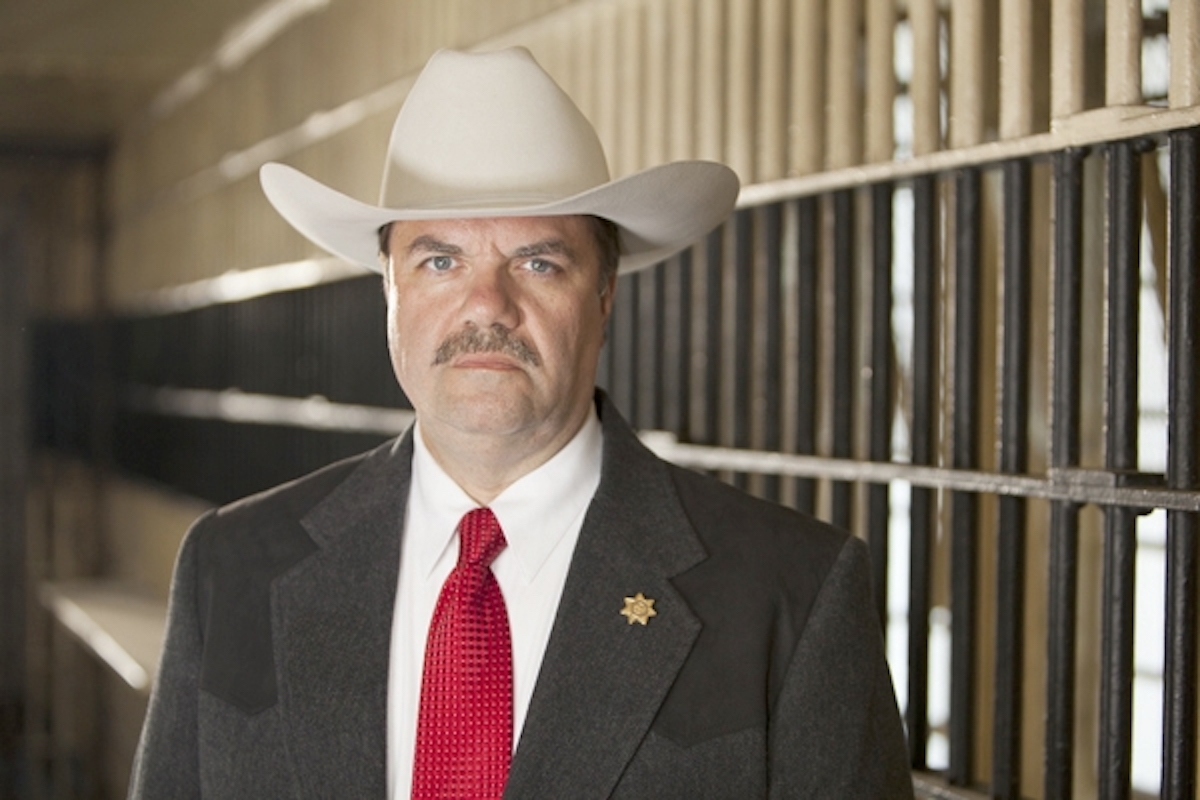The News Letter | We’re Watching the Police, but Who’s Watching the Sheriff?
Why Is Sheriff Bill Brown So Afraid of Civilian Oversight? I Think We Know

The City of Santa Barbara is well on its way to establishing a system of civilian oversight for its police department. Creating this layer of outside accountability had been locally discussed and debated for years ― decades, actually ― but it was the murder of George Floyd that galvanized enough organized and sustained momentum to finally begin the process.
The other day, I was talking to a lieutenant, and he said many of the department’s top brass are actually in favor of a civilian review board. We have nothing to hide, he said, so how could it hurt? In fact, he argued, building an independent review system and publicly sharing the transparency it would produce might actually improve relations between our cops and the community.
The effort is still in its early stages. Many questions remain ― most importantly, whether the board will be given subpoena power ― but real progress is being made.
Unfortunately, the same can’t be said for independent oversight of the Santa Barbara County Sheriff’s Office, which is hiding far more skeletons in its closet than the SBPD.
After George Floyd was killed, I embarked on a series of stories that examined cases where Santa Barbara law enforcement agencies used serious physical force against civilians. I filed California Public Records Act requests with both the Sheriff’s Office and the SBPD for information dating back to 2010 and received a boatload of documents in return.
Among the reports, interviews, and photographs were multiple Sheriff’s Office cases that stood out for the brutality of the deputies involved and the dishonesty displayed by their superiors when defending their indefensible actions.
The files also revealed that a single Santa Barbara deputy ― Jeremy Rogers ― has been involved in multiple shootings and a car crash during his short career that killed five civilians and maimed two others. That can’t just be bad luck.
By contrast, the records I received from the SBPD detailed just two serious use-of-force incidents ― one involving a homeless woman whose arm was broken as she resisted arrest, the other involving the fatal shooting of a wanted gang member who opened fire first ― where no wrongdoing was committed and no controversy was generated.
So why are we demanding a higher level of accountability of the SBPD, but not of the Sheriff’s Office? Where’s the energy and will to hold an objectively more troubled agency to task?
The Sheriff’s Office shootings and beatings, the files revealed, have also resulted in millions of dollars in lawsuit settlements paid with taxpayer money. These quiet, out-of-court payoffs are often made to avoid a public trial, where juries might award the plaintiff an even larger sum and damning evidence against the Sheriff’s Office could be aired.
Sign up for Indy Today to receive fresh news from Independent.com, in your inbox, every morning.
Just as importantly, the settlements let the department off the hook without legally admitting any wrongdoing. Zero accountability is required. Here’s a rundown of just some of those recent cases:
- 2013 ― A burglar named Jeremy Bordegaray is shot through the gut by deputies in Carpinteria and sues for excessive force. Dash-cam video of the incident doesn’t match statements given by the deputies, who appear to have lied that Bordegaray put their lives in danger, and the county pays Bordegaray $800,000 to make his case go away.
- 2017 ― Bryan Carreño, in the midst of a suicidal break, is shot 20 times by five deputies who cornered him and themselves on the back patio of a La Cumbre–area home. His family sues for wrongful death, and internal records reveal the deputies broke their own tactical protocols when establishing a perimeter to confront an agitated suspect. The Carreños are awarded $850,000.
- 2018 ― During a traffic stop that turned into a high-speed chase through Summerland, Chandler French suffers a broken back as he’s body-slammed by an adrenaline-filled deputy. He sues for excessive force and is paid $950,000 to disappear. During his deposition in the case, Undersheriff Sol Linver essentially admits deputies are trained how and when to lie to the public, and that the department struggles to fairly assess the actions of its own members.
- 2019 ― Cameron Ely, the son of Tarzan actor Ron Ely, is shot 22 times by deputies after fatally stabbing his mother. The deputies said they thought Cameron was armed at the time, and they claimed he threatened and lunged at them, despite multiple audio recordings to the contrary. The case is pending.
Deputy Jeremy Rogers was directly involved in the Ely incident ― his third fatal shooting ― and two of his earlier violent confrontations resulted in payouts totaling a whopping $5.5 million.
Again, by contrast, SBPD settlements over the past decade have totaled less than $100,000 and have involved only minor injuries and property damage.
As much as they reveal, the official records don’t account for the stories and anecdotal evidence the Independent has been hearing about the Sheriff’s Office for years. Mainly that it often conducts itself with the aggressive, paramilitary, us-versus-them mentality that law enforcement reformers across the country are trying so hard to overcome. The SBPD, on the other hand, is much more committed to progressive forms of policing and new methods of restorative justice.
So, I ask once more, why are we so focused on the SBPD when it’s the Sheriff’s Office that has the big questions of this George Floyd era to answer?
Were any of the deputies in the above cases disciplined? If so, how? Did they have any previous complaints against them? Have any been filed since? How does the Sheriff’s Office reconcile its public statements clearing the deputies of wrongdoing with records that show they in fact took things way too far? Has Jeremy Rogers been reprimanded or retrained in any way? Is he still on active duty? If so, where is he assigned?
We don’t know the answers to these questions because no one with the authority to demand them is asking. Public Records Act requests by the media only go so far and reveal so much. And because Sheriff Bill Brown is an elected official, the County Board of Supervisors have only so much power over him and his department. Only a sanctioned body of outside oversight could get its hands on that crucial information.
Brown, who has privately told people he’ll be running for reelection when his fourth term is up in 2022, has resisted even the suggestion of civilian oversight. In fact, he’s scoffed at it. Such an undertaking would be an expensive and unnecessary burden on his department, he’s argued. He recently called it “a solution in search of a problem.”
But if his department truly had nothing to hide, what is the Sheriff so afraid of? I think we know.
Support the Santa Barbara Independent through a long-term or a single contribution.



